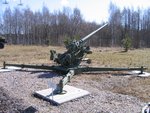Freebird
Master Sergeant
The Commonwealth troops managed to got trained on US tanks in no time (despite new guns, radios, engine, transmission, interior), so I'd say a month on a new tank of British origin would've been cool for a crew that has already seen some experience.
Saying that it would've took 8-10 weeks for tanks to arrive from UK to Egypt is way of the mark. Eg. it took RN ships 15 days to travel from Isles to Malta during Pedestal (granted, the transports used there were not the slowest available). That makes 20 days with same speed, perhaps 30 with regular transports. Two years to develop. 1st series shipped in August '42, Arriving in September, ready for Alamein in late October.
Sorry, no.
They didn't ship any convoys to Egypt in 1942, all of them went around the Cape, and had done so since "Tiger" in May 1941. Malta was so desparate for supplies in the summer of '42 that there was no way that they could trans-ship anything to Egypt, every ton that made it through to Malta from Gibratar was desperatley needed.
The problem was that with the italian capture of Cyrenecia in May '42, the convoys couldn't get by the Axis air forces
Feb 1942, convoy MF5, all sunk or disabled.
Mar 1942 convoy MG1 - Egypt to Malta, 4 transports, Two transports were sunk at sea, while the British 2 reached Malta. Both were sunk at anchor in Valetta harbour by German aircraft before unloading was completed.
June '42 Harpoon - Gibraltar to Malta, 6 transports, 4 sunk. Two arrived in Malta with desperately needed supplies.
June 42 Vigorous Vigorous was heavily attacked by aircraft, torpedo boats and submarines over four days, threatened by a strong Italian battlefleet, and eventually returned to Alexandria. No transports reached Malta, 2 sunk, several damaged.
August 1942 Pedestal 14 transports, 10 sunk (Ohio offloaded before sinking), 2 badly damaged (Rochester Castle brisbane Star) only two arrived safely at the cost of 7 RN ships sunk or badly damaged. Even with the Fuel supplies delivered Malta is still badly short of supplies
There was simply NO WAY that the admiralty was going to try to ship anything to Egypt via Malta in the second half of '42, nor could they have succeeded even if they had tried.
Your tanks for El alamein will arrive via the Cape - period. (sorry)
As for 'Brittsh scrapping the normal tank developing cycle', you'd have to be more specific on what tanks we're talking to. The best tank Brits produced prior Cromwell was Valentine, a private project. So the 'British normal tank developing cycle was far from flawless.
Because the tank design was featuring 2 pdr (ditching anti-personal anti-AT-gun capabilities- Brits knew about that already in June '40), because armor was of questionable thickness layout, because it was to use riveting to join the armour slabs, because it was based on premise that only tanks (out of all weapon systems) are not to be developed further, during a major war?
The normal British practice in the war was a 2.5 year development, with a 2 year cycle.
As I explained before, they took the Crusader "Off the drawing board" in mid '39, production begins mid 41. In the Summer of 1940 they started considering specifications for the replacement tank, issued the proposal in the fall of '40, proposal accepted early '41 and production begins at the end of '42.
That would be beyond this thread
Tomo, your scenario has to make sense. You can have have space aliens drop the designers through a time portal
If you can see any logic for weapon systems to be equally efficient* in 1942 as they were in 1940, that's cool. Because I don't.
*The ability to attack soft targets still lacking for 2pdr - not all tank targets are other tanks
For reasons, see above. If you think Crusader I was that good, okay.
It's not what "I" think, it was the opinion of Churchill the British Chiefs, until there was some actual evidence to prove it wrong.
One of greatest sentences I've read in this forum
Despite that critical need, they continued development of tanks. The tanks were not perfect (nor were on other countries; most of them were buying Britsh ones pfe-war anyway), hence this thread.
Indeed they did, but they were not in urgent need to rush out a new designin June 1940
That makes 2 years and, say, 3 months before 1st tanks are rolled out? With specification issued in June 1940, 'my' tank force might just cut it for Alamein
(Not that those ones would be Cromwels)
Tomo, the proposal had to be discussed by the British tank board, which included Churchill the CIGS in the discussions. There is no way that they are going to be taking time off during Dunkirk France to have these discussions during June 1940.
But, despite all the reasons that I've given why it doesn't make sense, your proposal is issued on July 1 1940 (The Cavalier/Cromwell A23 proposal about 3 months early)
Therefore you could the tank to begin production in Oct 1942, (about 3 months early) and arrive in the desert in Dec 1942. (about 3 months early)

